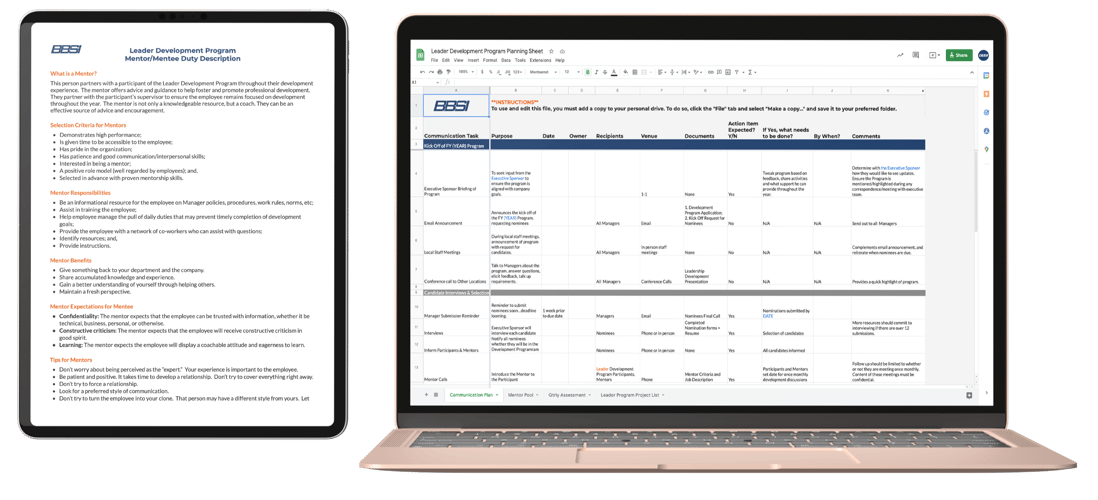Mentorship Program Planning Pack
Mentorship: The Key to Workforce Development
Today's employees want to work for companies that invest in their professional development and growth. Establishing a mentorship program is critical for attracting talent, improving morale, reducing turnover, and creating a more productive work environment.
Get started today with our free mentorship program resources:
- Mentor Criteria and Job Description
- Leader Development Program Planning Sheet

A successful mentorship program helps companies:
- Promote diversity and inclusion
- Improve employee engagement
- Establish avenues for leadership development and succession planning
- Create deep relationships within the organization
- Create a learning culture
Mentorship Frequently Asked Questions (FAQs):
What is mentorship?
Mentorship is a structured or organic process businesses can use to foster relationships between senior or high-performing employees and those with less experience to exchange existing knowledge, skills, and advice.
Why are mentorship programs important?
Mentorship programs provide employees with the opportunities for career development and personal growth that most have come to expect from their employers. It facilitates personal connections between employees, improves cross-departmental communication, and helps keep employees invested in their company.
What are the different types of mentorship programs?
- Flash Mentoring: A single educational meeting between a mentor and mentee that usually lasts one or two hours. Flash mentoring sessions typically cover a topic mentees and mentors agree upon ahead of the meeting.
- Brown Bag/Workshop Mentoring: Brown bag meetings are open forums during working hours that have a preset discussion topic. These meetings typically discuss topics like DEI, employee development, conflict resolution, and more.
- Circling Mentoring: Circling mentoring is when a mentee meets with several mentors across departments, so they can be exposed to several different perspectives and make connections with more than one mentor.
- Shadowing: Shadowing is when an employee observes a leader in a department of their choice to experience their day-to-day responsibilities and the intricacies of their role.